Although all cleats look similar, they have their differences. Figuring out which ones to buy for yourself or your child can be challenging because some sports don’t allow certain shoes. Can you use soccer cleats to play football?
Soccer cleats can be used for football. They are often seen as a better choice because they are lighter and allow more flexibility. On the other hand, it’s not recommended to use football cleats for soccer. Football cleats hinder flexibility and performance in soccer.
In this article, I will talk about the differences between soccer and football cleats in more detail. If you want to learn more and find out which ones to buy, be sure to keep reading.
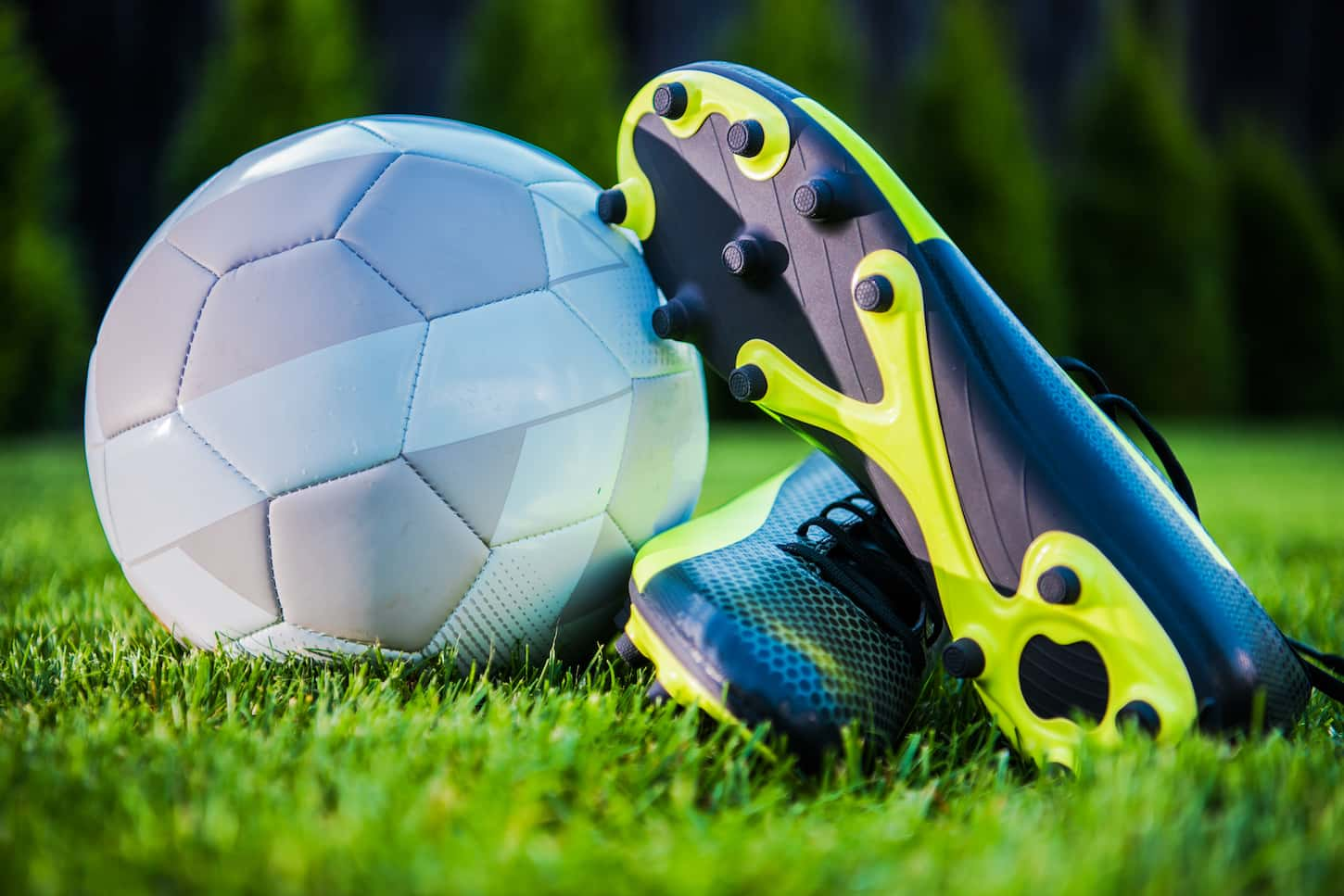
Do Soccer Cleats Work for Football?
Soccer cleats work well for football. Since soccer cleats generally don’t cover the ankles, they give the ankles and feet more flexibility and freedom for movement. They are also more lightweight than football cleats, so they are comfortable to wear for most people.
Although soccer cleats work for football in many cases, there are times when football cleats are more appropriate.
Since football cleats provide more stability and coverage, they can help players’ strength during the game, which is vital in American football. Football cleats also protect football players’ feet more than soccer cleats do.
However, in most cases, soccer cleats are perfectly acceptable and even favorable for football.

Is There a Difference Between Football and Soccer Cleats?
There are slight differences between football and soccer cleats. Soccer cleats are more lightweight and don’t cover the ankles. Football cleats have an extra spike stud at the toe and offer more foot protection. They also come in different low, medium, and high-top styles.
Football cleats are made to be sturdier and more protective because the nature of football is slightly more threatening than soccer. Due to the added stud at the toe, football cleats reduce speed, so they are inappropriate for soccer.
Speed is critical in soccer, so football cleats simply wouldn’t work well. Additionally, most football cleats cover the ankles, which hinders flexibility.
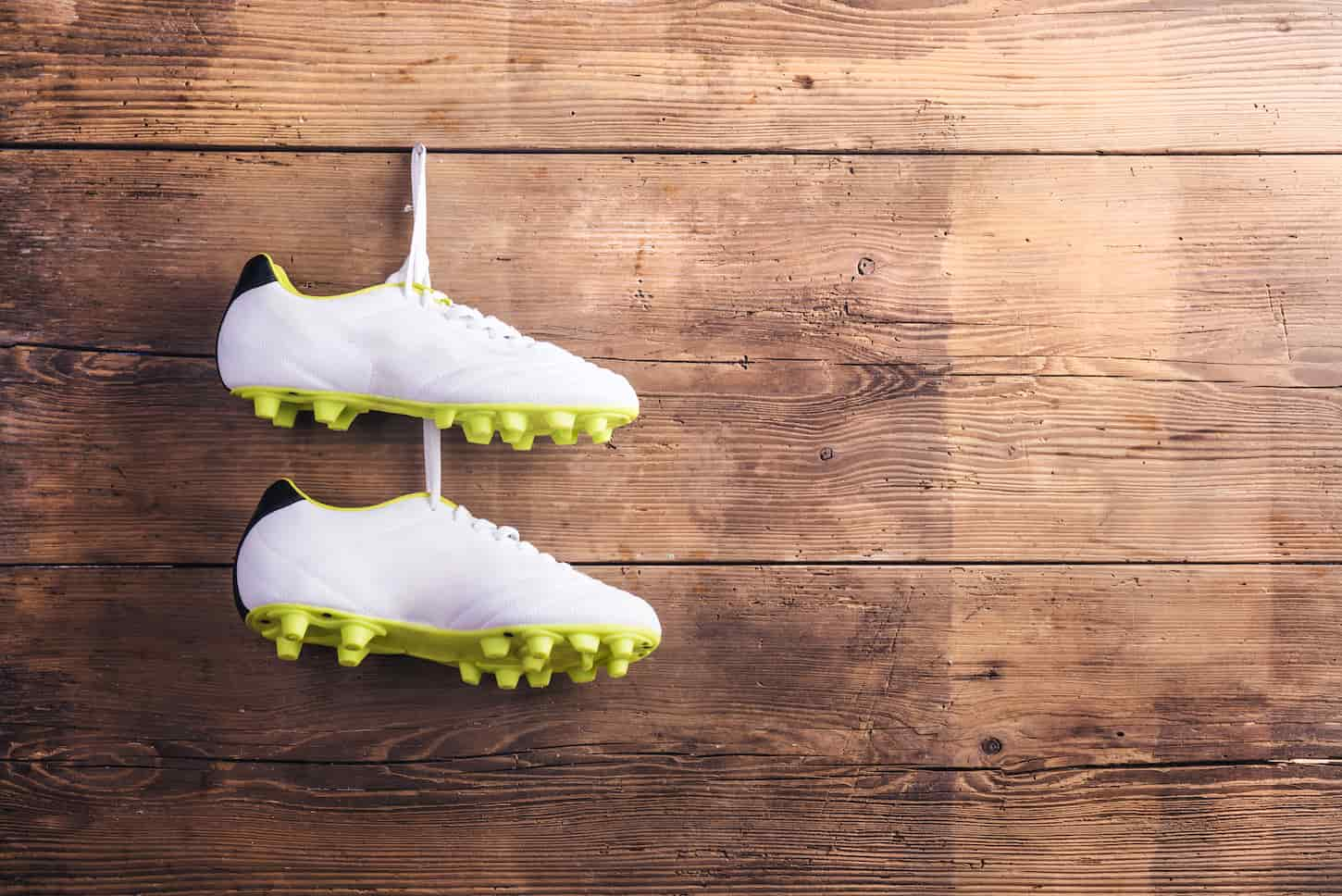
Are Soccer Cleats Better Than Football Cleats?
Soccer cleats are not better than football cleats, and football cleats are not better than soccer cleats. It is down to personal preference and the position in which you play. For some positions in football, soccer cleats are better; for others, they’re not.
When are soccer cleats better than football cleats?
Whether you or your child should wear soccer cleats or not depends on the position in which you play.
If you’re positioned as a kicker on your football team, for example, then soccer cleats are a better choice. Since the kicker’s primary duty is to kick the ball, they don’t require extra foot safety, so soccer cleats are better. The extra speed a kicker can get running can even help kick the ball further.
It’s also down to personal preference. Some players prefer the freedom of movement from wearing soccer cleats, while others prefer the stability and safety of football cleats.
If you’re in a position where speed is the most crucial thing, soccer cleats can be more appropriate. Football cleats will be better if you’re in a position where steadiness and strength are more important.
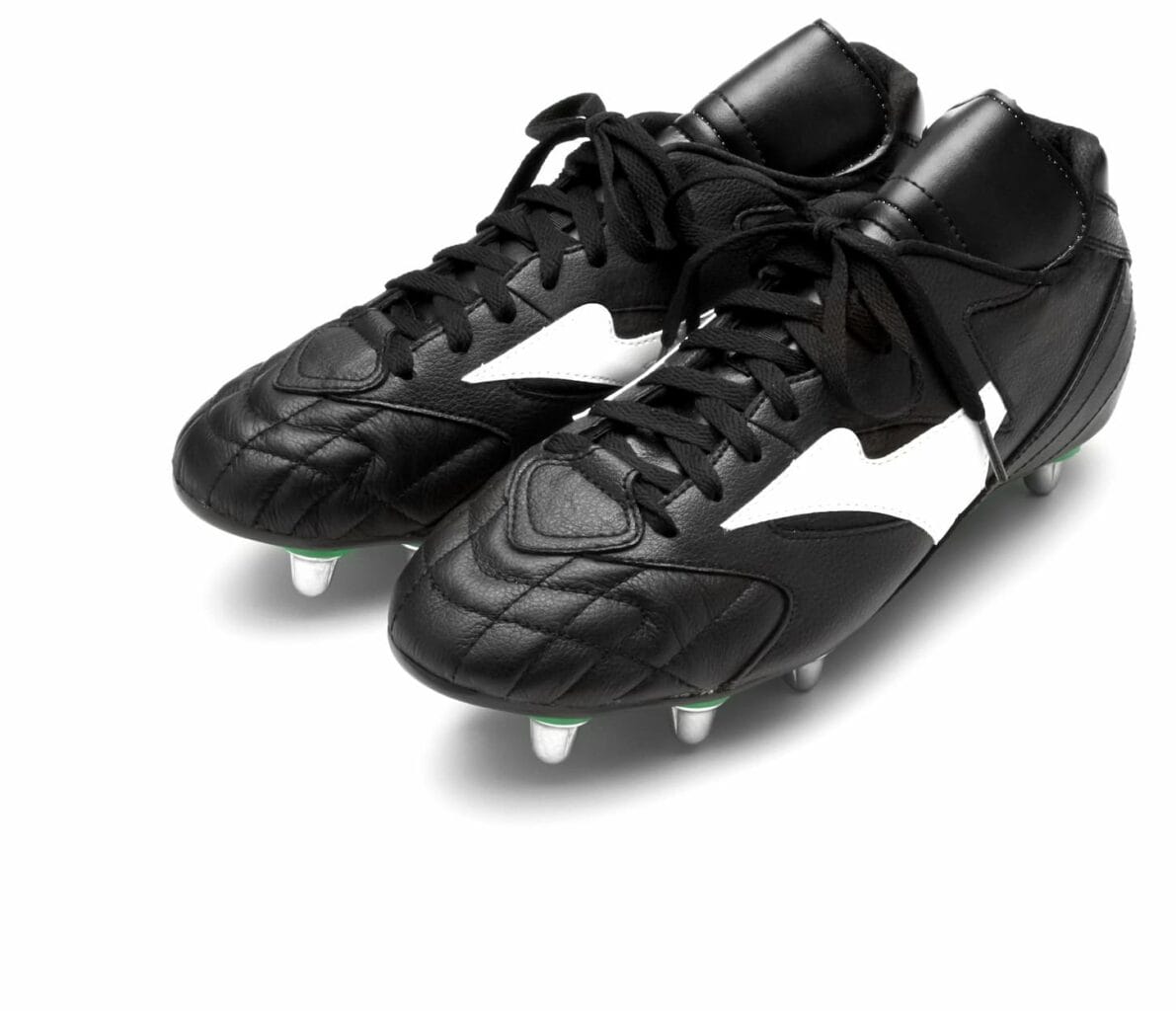
How Do You Know if Cleats Are for Football?
Examining the style of the cleat will tell you whether it’s a football or soccer cleat. Here are some things to look for:
- The ankle height: Football cleats can come in various heights, but they generally provide ankle coverage.
- The studs: Football cleats have an extra stud at the toe that soccer and other cleats don’t have.
- The weight: Football cleats are heavier than soccer cleats.
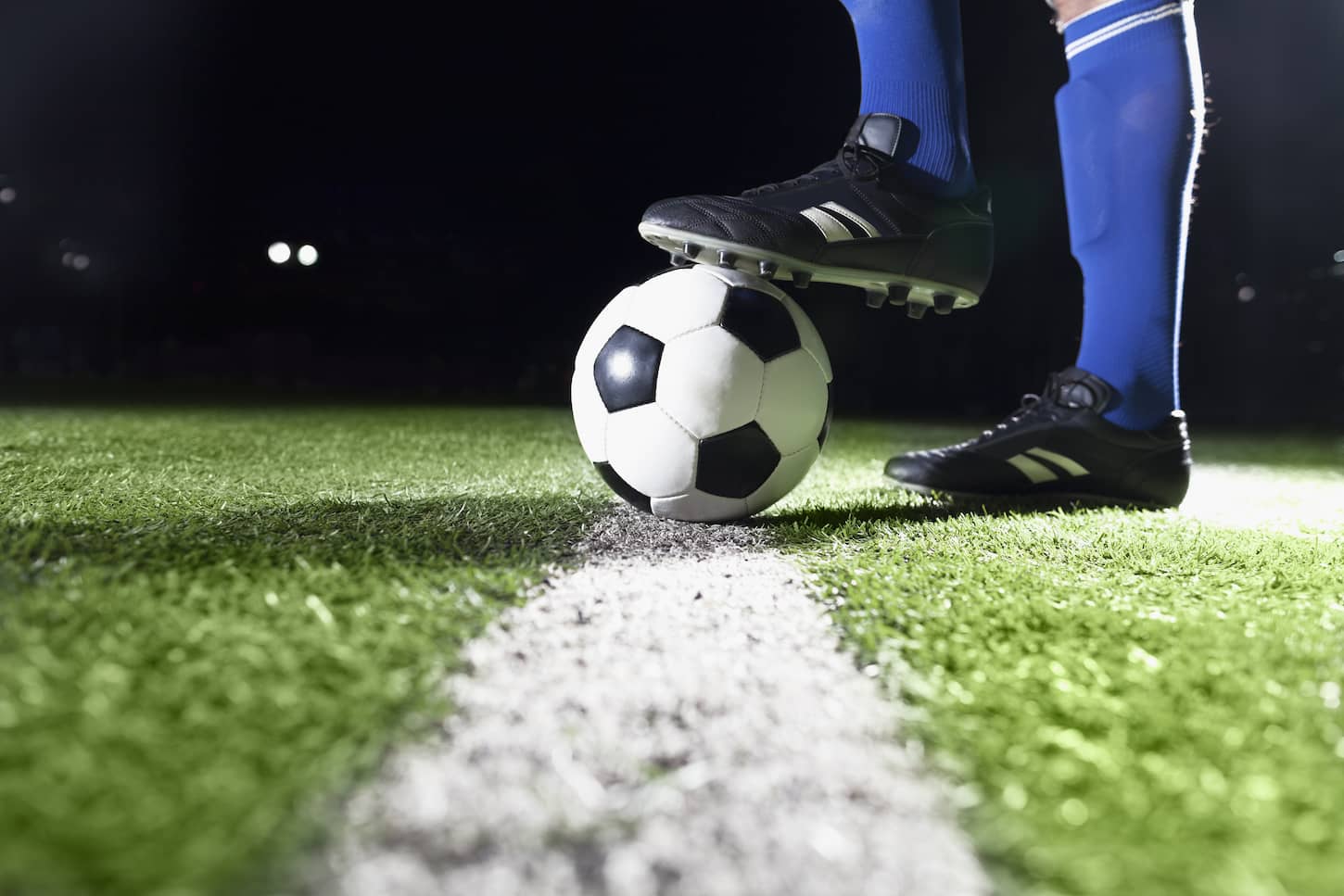
Can Baseball Cleats Be Used in Football?
Baseball cleats shouldn’t be worn for football. They aren’t designed for the sport and aren’t as versatile as soccer cleats. If you want to use cleats other than football ones, you should use soccer rather than baseball cleats. Football and soccer cleats are the only appropriate cleats for football.
Even then, your football or soccer coach may have some input on which cleats you should wear for your position, especially if you’re playing in club sports or in a higher-end league.
If you’re just playing youth rec soccer or football, then it’s fine to mix and match soccer and football cleats. However, never wear baseball cleats to a soccer or football game, and soccer and football cleats aren’t the best for baseball.

Why Do Football Players Wear Soccer Cleats?
Football players choose to wear soccer cleats because they offer more significant ankle movement and faster speed. They also find them convenient because they’re lightweight, making them comfortable to wear. They’re an attractive choice because of their versatility.
Soccer cleats are also an excellent choice for flag football. Flag football requires swift movements and versatility, so soccer cleats are generally the best choice.
Wearing football cleats for flag football can hinder speed and performance, and there are no rules that say soccer cleats aren’t allowed.
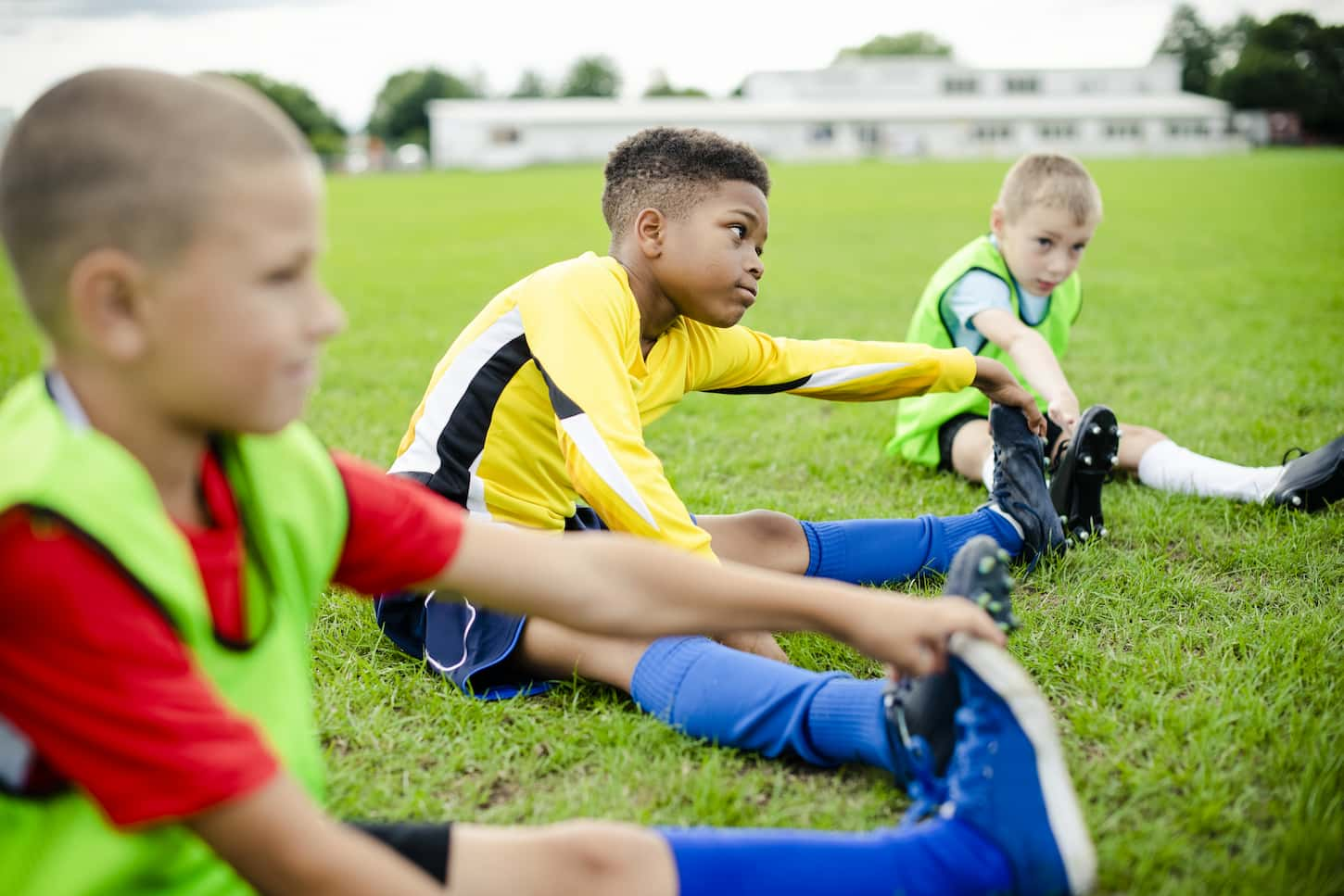
How to Choose the Right Football Cleat
The right kind of football cleat depends on personal preference, feel, comfort, and if any extra protection is needed. Players who tend to roll an ankle may also benefit from a high-top football cleat unless they wear an ankle brace with a lower-topped cleat.
If you want to buy football cleats rather than soccer cleats, you’ve probably noticed how many options there are. Unlike soccer cleats, football cleats come in various styles and heights, so it can be challenging to know which ones to choose.
Deciding which ones to choose will depend on many things, such as personal preference and the position in which you or your child plays.
I want to talk about the different types of football cleats in more detail so that you can decide which one is best for you or your child, so keep reading to find out more.

#1. Low-top football cleats
Low-top football cleats are the most flexible and agile of the different types of football cleats. They offer more ankle and foot movement since they don’t cover the ankle and lower leg as much as other types.
In most cases, low-top football cleats are best for running backs and wide receivers; this is due to the mobility they offer, and mobility and speed are highly important in these positions.
Alternatively, soccer cleats would be a good choice for running backs and wide receivers because they also offer flexibility and maximum mobility.
#2. Mid-top football cleats
Mid-top football cleats are slightly more protective than low-tops because they cover more of the ankles. Of course, this is good for safety, but it also hinders speed and flexibility, though not as much as a high-topped cleat.
Unlike low tops, mid-top cleats are appropriate for most player positions. As well as being suitable for running backs and wide receivers, they are also appropriate for quarterbacks and defensive backs.
Therefore, mid-tops are more versatile because they are suitable for more positions in the game.
#3. High-top football cleats
High tops are the least versatile football cleats because they cover much of the ankle and parts of the lower leg.
In most instances, high tops are not necessary. However, it is recommended that the linesmen wear high tops due to the added safety.
With the added ankle support, high tops ensure stability and reduce the risk of injuries. However, they also reduce speed and agility, which is why most players do not widely use them.
How to Choose the Right Cleat Size
Choosing the correct soccer or football cleat size is like choosing the right size of any other shoe. It’s essential to make sure there’s enough wiggle room for the toes, but there shouldn’t be too much room. The socks to be worn when playing should also be considered when choosing the right size.
If you or your child gets the wrong size, it will hinder performance, agility, and comfort. Therefore, it’s essential to ensure you’re sure of the size before purchasing.
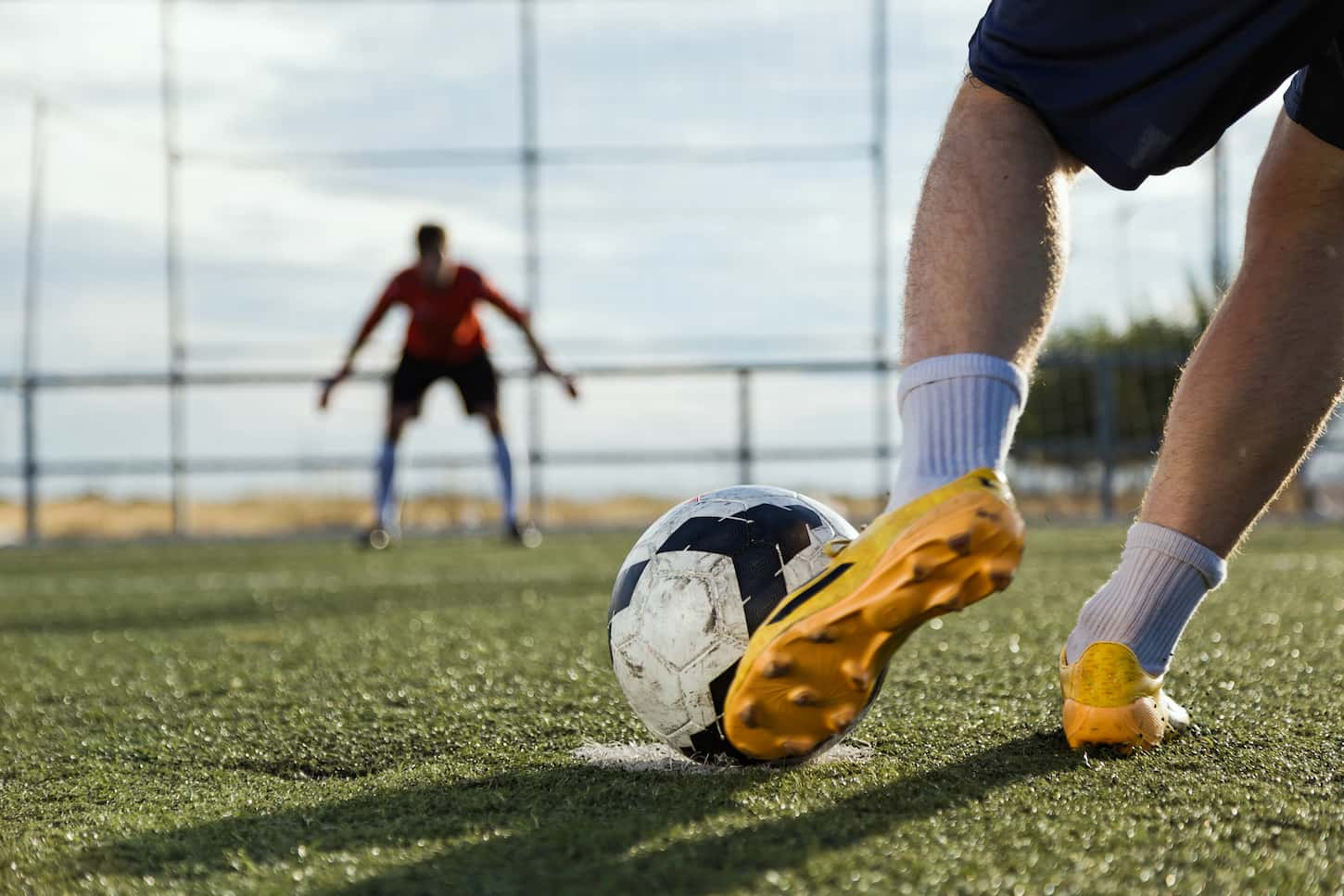
Which Cleats Should You Buy for Football?
Now that you know how to choose the right cleat size, you might be wondering which ones you should buy for football. Read below if you want to find out which ones to purchase.
When to buy football cleats
Buy football cleats for yourself or your child if you need added protection and stability. Football cleats may be better if playing as a quarterback or defensive back. However, soccer cleats are also perfectly acceptable to wear in these positions.
The only players in football who should always use football cleats are linemen. In most other cases, it’s down to personal preference.
When to get soccer cleats
Soccer cleats are a great choice if you want shoes that are flexible and can be used across different sports unless the football position played is a lineman. Linemen should wear football cleats.
If your child plays both soccer and football, and if you want to save some money, you should consider soccer cleats. Rather than having to buy two different pairs, you’ll only need to splurge on one good pair!
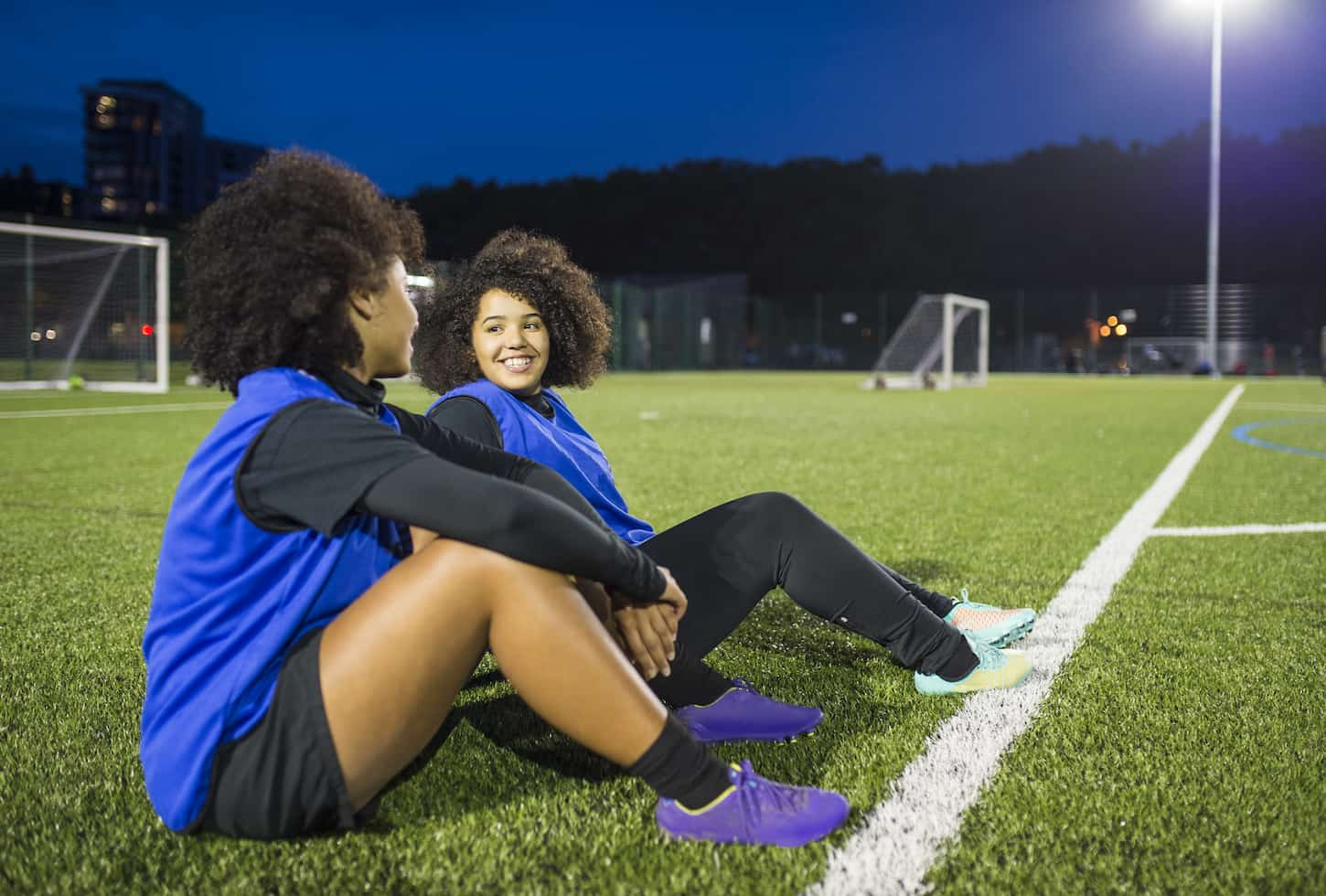
How much should I spend on cleats?
A good pair of cleats usually costs between $20 and $50 for youth pairs, while club players or high school players may want better pairs that regularly cost between $50 and $150.
If you or your child plays football regularly, it’s best to invest in a decent pair of cleats. Although the higher quality cleats are more expensive, I find them to be worth it because they are more comfortable and long-lasting.
Generally, the cheaper cleats aren’t worth it and will get ruined quicker. Buying expensive, good-quality cleats also means you can give them to a younger child later down the line because they’ll remain intact for longer.
We’ve tried buying the $15 to $20 pairs at big box stores, and they just aren’t comfortable. My kids often refused to wear them after barely breaking them in. However, when we bought them better pairs of cleats, those got worn regularly and appropriately.
Next Steps: Soccer Cleats are Great for Football
In conclusion, soccer cleats are flexible, lightweight, and can be used in both football and soccer. Football cleats are more restricted because they’re only suitable for football, so soccer cleats are great for versatility. Since soccer cleats offer more freedom of movement and speed, they’re a good choice for most football players.
Ever wonder about some of the other soccer equipment, and if you should keep it around for a pickup game at home? Make sure you read our article, Soccer Equipment: Necessities, Costs, and Alternatives, next!
Resources
Learning from your own experiences is important, but learning from others is also smart. These are the sources used in this article and our research to be more informed as a family of sports nuts wannabes.
- Ben. “Why Soccer Cleats Are GREAT for Flag Football.” Your Soccer Home, 15 Sept. 2021, yoursoccerhome.com/why-soccer-cleats-are-great-for-flag-football.
- “FOOTBALL CLEATS GUIDE: CHOOSE THE RIGHT CLEAT FOR YOU.” Adidas, www.adidas.com/us/blog/637550-football-cleats-guide-choose-the-right-cleat-for-you. Accessed 23 Dec. 2021.
